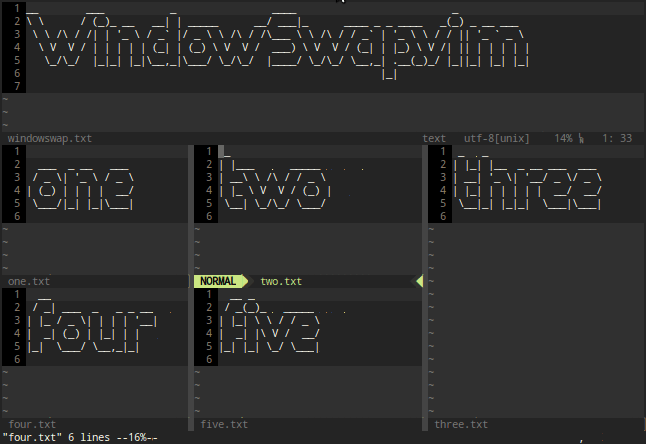如何在vim中交换两个打开文件的位置(在分割中)?
假设我在vim中有一些任意的分割布局。
____________________
| one | two |
| | |
| |______|
| | three|
| | |
|___________|______|
有没有办法交换one和two并保持相同的布局?在这个例子中很简单,但我正在寻找一个解决方案,将有助于更复杂的布局。
更新:
我想我应该说得更清楚些。我前面的例子是对实际用例的简化。有一个实际的例子: .
.
我怎么能交换任何两个分割,保持相同的布局?
更新!3年多后……
我把sgriffin的解决方案放在一个Vim插件中,你可以轻松安装!用你最喜欢的插件管理器安装它,并尝试一下:WindowSwap.vim

最佳答案